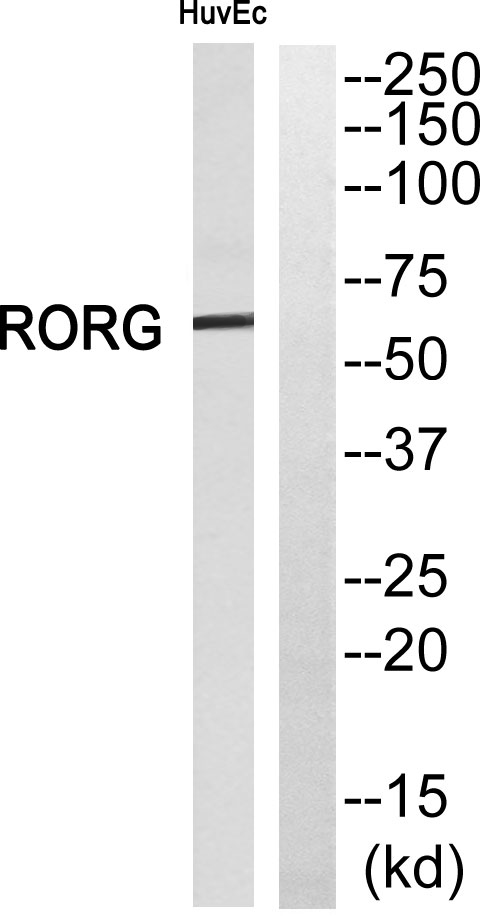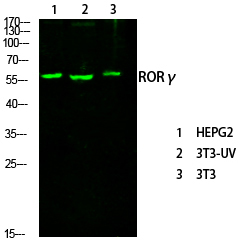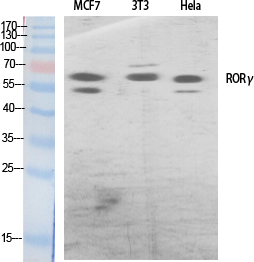产品名称
RORγ Rabbit Polyclonal Antibody
别名
RORC; NR1F3; RORG; RZRG; Nuclear receptor ROR-gamma; Nuclear receptor RZR-gamma; Nuclear receptor subfamily 1 group F member 3; Retinoid-related orphan receptor-gamma
蛋白名称
Nuclear receptor ROR-gamma
存储缓冲液
Liquid in PBS containing 50% glycerol, 0.5% BSA and 0.02% New type preservative N.
Human Gene Link
http://www.ncbi.nlm.nih.gov/sites/entrez?db=gene&term=6097
Human Swissprot No.
P51449
Human Swissprot Link
http://www.uniprot.org/uniprotkb/P51449/entry
Mouse Gene Link
http://www.ncbi.nlm.nih.gov/sites/entrez?db=gene&term=19885
Mouse Swissprot No.
P51450
Mouse Swissprot Link
http://www.uniprot.org/uniprot/P51450
免疫原
The antiserum was produced against synthesized peptide derived from human RORG. AA range:71-120
特异性
RORγ Polyclonal Antibody detects endogenous levels of RORγ protein.
稀释度
WB 1:500-2000;IHC-p 1:50-300
宿主
Polyclonal, Rabbit,IgG
背景介绍
The protein encoded by this gene is a DNA-binding transcription factor and is a member of the NR1 subfamily of nuclear hormone receptors. The specific functions of this protein are not known; however, studies of a similar gene in mice have shown that this gene may be essential for lymphoid organogenesis and may play an important regulatory role in thymopoiesis. In addition, studies in mice suggest that the protein encoded by this gene may inhibit the expression of Fas ligand and IL2. Two transcript variants encoding different isoforms have been found for this gene. [provided by RefSeq, Jul 2008],
组织表达
Isoform 1 is widely expressed in many tissues, including liver and adipose, and highly expressed in skeletal muscle. Isoform 2 is primarily expressed in immature thymocytes.
功能
function:Orphan nuclear receptor.,similarity:Belongs to the nuclear hormone receptor family.,similarity:Belongs to the nuclear hormone receptor family. NR1 subfamily.,similarity:Contains 1 nuclear receptor DNA-binding domain.,tissue specificity:Highly expressed in skeletal muscle.,
纯化
The antibody was affinity-purified from rabbit antiserum by affinity-chromatography using epitope-specific immunogen.




